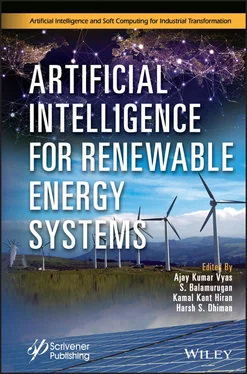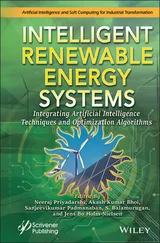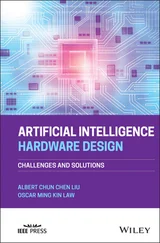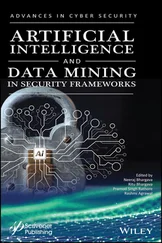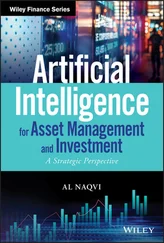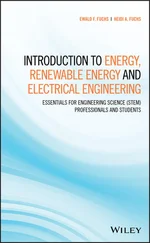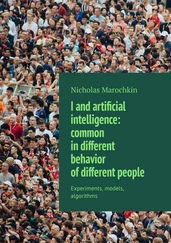Being an integral component in wind power generation, an operational stability of six-phase synchronous generator under steady state (i.e., small signal stability) is also of prime importance. Although, the small-signal stability analysis of three-phase synchronous machine is available in few available literature [15] using root locus [16] and Nyquist criteria [17]. But, for multiphase (i.e., six-phase) synchronous machine, a very limited literature is available for small-signal stability analysis. An introductory analysis of synchronous machine was reported in [18] followed by the determination of stability limits under parametric variation and different working conditions [19] when compared with its three-phase counterpart [20]. With the aim to access the suitability and applicability in wind power generating system, this chapter is dedicated to present a small-signal stability analysis of grid connected six-phase synchronous generator showing a comparison with its three-phase equivalent. For this purpose, a linearized version of six-phase synchronous generator model has been derived and used to evaluate the system eigenvalue. Eigenvalue criteria are used for small signal stability analysis under different machine parametric variation. A comparative analysis, from stability view point, is also presented using Park’s ( dq0 ) variable for both grid connected three- and six-phase synchronous generator.
1.2 Analytical Modeling of Six-Phase Synchronous Machine
To design a six-phase machine, it is a common strategy to split the stator winding into two through phase belt splitting namely, abc and xyz having the angular displacement of α = 30°, to have asymmetrical winding [4, 18, 19]. Rotor of the machine remains same having the field winding fr and damper windings kd and kq along d-q axes, respectively. While going onward for the mathematical modeling, some of the important simplifying assumptions are considered [21, 22]:
Both the three-phase stator windings (abc and xyz) are symmetrical balanced having a perfectly sinusoidal distribution in the air-gap.
Flux and mmfs are sinusoidal with no space harmonics.
Saturation and hysteresis effects are ignored.
No skin effect, i.e., winding resistance, is not dependent on frequency.
Although, voltage and electromagnetic torque can be mathematically expressed in terms machine variables, which results in non-linear differential equations [22]. The non-linearity is due to the time varying inductance term. For simplicity, with constant inductance terms, concept of reference frame theory is used, and equations are preferably written in rotor reference frame using Park’s equation. Mathematically, voltages and flux linkage per second of a six-phase synchronous machine using Park’s variables are as follows [21–23]:
(1.1) 
(1.2) 
(1.3) 
(1.4) 
(1.5) 
(1.6) 
(1.7) 
where p shows the differentiation function w.r.t. time.
1.2.2 Equations of Flux Linkage Per Second
(1.8) 
(1.9) 
(1.10) 
(1.11) 
(1.12) 
(1.13) 
(1.14) 
where
(1.15) 
(1.16) 
The parameters of rotor circuit are referred to the stator winding set abc . These voltage and flux linkage equations suggest the equivalent circuit, as shown in Figure 1.1, wherein Llm and Lldq represent leakage inductance of common mutual and cross mutual coupling between d and q -axis of stator circuit, respectively:
(1.17) 
(1.18) 
where xlax , xlay , and xlaz indicate leakage reactance between phase a (of winding set abc ) with each phase of other winding set xyz .
Phenomenon of mutual coupling is due to the sharing of same slot by stator winding conductor of different phase. This is signified by the term of common mutual leakage reactance ( xlm ). Value of xlm is dependent on displacement angle (α) and winding pitch, resulting in the variation in harmonic coupling of windings. By neglecting xlm , some variation is noted in the voltage harmonic distortion [13] with no change in transient effect. A detailed procedure for the determination of slot reactance is available [24] together with the standard method to evaluate the machine parameters [25, 26].
Detailed mathematical simulation of six-phase synchronous machine is based on determination of voltage and torque equations in integral form with flux linkage per second and speed as state variable, winding currents as output, connected grid voltage and prime mover torque as input variables. The voltage equations ( 1.1) to ( 1.7) together with the flux linkages equations ( 1.8) to ( 1.14) are firstly solved for the currents, which are then substituted in the voltage equations. Integral forms of mathematical equations are as follows:
Читать дальше
